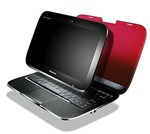What’s “really right” when it comes to tablets and slates? An analyst from Goldman Sachs asked Ballmer during the Q&A whether Microsoft would be pursuing “a new operating system” specifically designed for tablets. Ballmer responded, saying, “The operating system is called Windows” and then said that for devices with screens around three to four inches, “The answer is Windows Phone.”
I’m no Apple nut but I can tell you that what the company’s done with the iPad as far as the operating system goes is pretty clever; take an already established mobile operating system and tweak it slightly to fit the iPad’s larger format. Keep the app store and all the apps in place, ensuring the old apps will work on the new device and then let people create new apps specifically for the iPad. Same basic deal with the iPod Touch, iPhone 4, and whatever else is coming down the pike. It allows Apple to sell different devices at different price points without too much fragmentation at all. If you’ve used an iPhone, you’ll be able to use an iPod Touch and an iPad right away. The only thing I’d change would be to make any app scale gracefully to any piece of Apple hardware instead of having device-specific versions.
When it comes to tablets and slates, Microsoft is looking to capitalize on that same idea but with Windows 7—the Windows operating system being a well-established platform with plenty of users and applications already in place.
There are two main problems with that plan, though.
For starters, Windows 7 doesn’t necessarily translate to a dynamite touch-based experience. That can be worked around somewhat with some interface tweaks, sure, but Microsoft would be wise to just create an overarching Windows 7 Tablet Edition with one standard interface used by all manufacturers. Then strip out a bunch of non-essential processes and services to improve battery life and performance. That’s the easy part.
The second issue is much more complicated: Windows Phone 7.
Microsoft has this totally overhauled mobile operating system coming out in a few months that’s facing a nearly impossible uphill battle against Apple, Android, and, to a certain extent, BlackBerry. It’s becoming more and more clear that the amount of available applications on a given mobile platform is important to consumers. In order to get the Windows Phone operating system in people’s hands, you need applications created by developers. In order to attract developers, you need a large pool of consumers willing to buy apps.
What better way to accelerate the pace of adoption for Windows Phone 7 than by making it available on as many devices as possible, including tablets. Follow the Apple plan but take it a step further. Sell dual-booting tablets that use the Windows Phone operating system for quick tasks, simple games, and basic web browsing, and let tablet owners boot into Windows 7 for more demanding tasks. Don’t restrict the Windows Phone operating system to handsets. Apple has proved that’s not necessary.
If there’s been one main criticism of the iPad it’s that it doesn’t run a full blown operating system. If there’s been one main criticism of Windows-based slates and tablets, it’s that they don’t run as smoothly or provide as much battery life as mobile operating systems would. Why not showcase how awesome this new Windows Phone operating system is by shipping it as a boot option on all Windows-based slates and tablets? It’s built for touch, light web browsing, and entertainment, right? Earn some extra credit by making Windows Phone apps compatible across devices. No iPad version this or iPhone 4 version that. You buy it once and it works on both your tablet and phone.
Ballmer’s assertion that “Some people are going to want, probably, a screen that they take with them and maybe they throw it back into the keyboard,” is probably more dead-on than he realizes. In my opinion, that’s the next big thing as far as mobile computing is concerned.
 Lenovo’s IdeaPad U1 hybrid notebook concept is an excellent example, if and when it ever comes out. You’d have a standard notebook running Windows 7 atop a full-power processor, RAM, and hard drive, but the screen would pop out of the chassis and have its own mobile processor, storage, and touch-friendly operating system built into it.
Lenovo’s IdeaPad U1 hybrid notebook concept is an excellent example, if and when it ever comes out. You’d have a standard notebook running Windows 7 atop a full-power processor, RAM, and hard drive, but the screen would pop out of the chassis and have its own mobile processor, storage, and touch-friendly operating system built into it.
In Microsoft’s case, such a package could run Windows Phone 7 when in tablet mode. Consumers get a no-compromise laptop and tablet, and Microsoft gets to sell both Windows 7 and Windows Phone 7 on one ticket, which broadens the reach of both operating systems.
Even without the cool hybrid design, Microsoft could do the same thing with a standard tablet. Sell it with both Windows 7 and Windows Phone operating systems. Get Windows Phone on every ultraportable touchscreen computing device that doesn’t have a laptop keyboard so the next time someone’s cell phone is due for an upgrade they say, “I’ve got a ton of apps on my tablet and I’m used to the operating system. I’ll switch to a new Windows phone.”
More on Techland:
Reboot: Windows Phone 7 Preview Part 1

